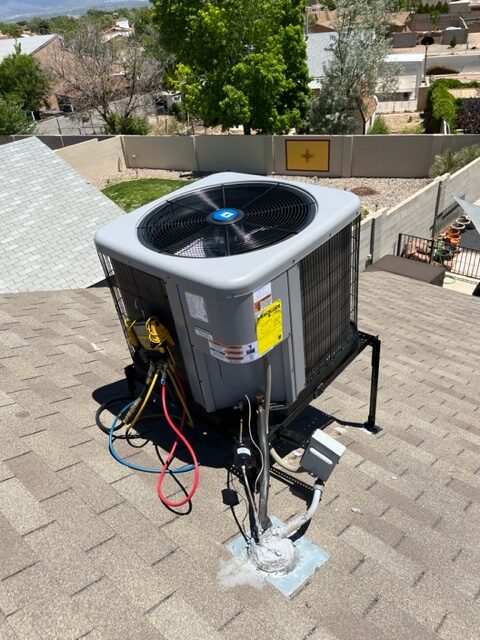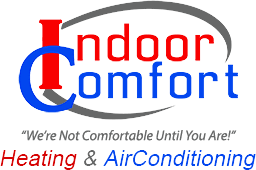
Do you know the difference between a heat pump and an air conditioner? Or what AFUE stands for? It’s easy to get overwhelmed by all the technical jargon around HVAC systems.
This residential guide breaks down the basics in simple terms so you can understand how home heating and cooling works. Read on!
What is HVAC?
HVAC stands for heating, ventilation, and air conditioning. These systems control the temperature, humidity, and air quality in your home. Fresh outdoor air enters through vents and is filtered. Then it passes through heating and cooling equipment before getting circulated through ductwork back into the house.
An HVAC system includes:
- Heating – Furnace, boiler, or heat pump
- Cooling – Central air conditioner or heat pump
- Distribution – Ductwork, pipes, vents
- Controls – Thermostat, humidistat, air filter
- Ventilation – Exhaust fans, ducts, chimney
It’s more than just air conditioning! The term HVAC covers complete climate control in your home.
Air Conditioning Systems
Air conditioners use a refrigeration cycle to cool your home. Here are the key parts involved:
Evaporator Coil – Contains cold refrigerant that absorbs heat from indoor air blown over the coil surfaces by the blower fan. This cools the air before circulating it through your home’s ducts.
Compressor – Pressurizes the warmed refrigerant gas from the evaporator, further raising its temperature.
Condenser Coil – Refrigerant from the compressor condenses back into a liquid here, releasing heat to the outside.
Expansion Valve – Expands and cools the condensed refrigerant before it reaches the evaporator again, creating a continuous loop.
This process keeps removing heat from your home and dumping it outdoors, providing refreshing cool air inside. An AC’s efficiency is measured by its SEER (Seasonal Energy Efficiency Ratio). Look for a high SEER of 14 or above.
Heat Pumps
A heat pump works like an AC in reverse – it absorbs outdoor heat and circulates warm air indoors. How’s that possible?
In heating mode, the outdoor evaporator coil becomes very cold by transferring heat into the refrigerant. A fan blows outdoor air across the cold coil, pulling more heat into the refrigerant.
That warmed refrigerant passes into the indoor condenser coil, releasing the heat into air that’s blown throughout your home by the blower. Voila – hot air from an AC-like system!
Heat pumps are efficient and provide cooling too. They’re ideal for climates without extreme winters. Where it gets very cold, they’re usually paired with a furnace.
Furnaces
Furnaces warm your house using combustion, burning a fuel like natural gas or propane. Here’s what happens inside a furnace:
Burner – Gas valve feeds fuel here to be ignited, producing flames.
Heat Exchanger – Surrounded by the flames, it heats up without being exposed to combustion gases.
Blower – Draws air across hot exchanger to warm it, then circulates heated air through ducts.
Vent – Exhaust pipe removes combustion byproducts outdoors safely.
Furnace efficiency is measured by AFUE (Annual Fuel Utilization Efficiency). Look for a high AFUE of 90% or more. The minimum rating is 80%.
Oil Furnaces
Oil furnaces work much like gas furnaces, but use heating oil instead of natural gas as fuel. Oil is sprayed into a combustion chamber and ignited by a burner. The flame heats the heat exchanger to warm air blown through your home.
Oil furnaces are uncommon, used in only about 5% of homes. But they can be the best option in rural areas without access to natural gas pipelines. Keeping an oil tank buried near the house provides reliable fuel.
Propane Furnaces
Propane furnaces are a great choice when natural gas lines don’t reach your property. Like oil furnaces, you can situate propane tanks wherever needed.
Propane, compressed gas derived from crude oil refining, burns cleanly and efficiently inside a furnace. Tanks can go above or below ground. Propane furnaces free you to install heating equipment in sheds, garages, or wherever you need it.
Ventilation
Ventilation is an important but often overlooked part of an HVAC system. Indoor air needs to be exchanged with fresh outdoor air for good air quality.
Ventilation helps:
- Remove pollutants, odors, and excess moisture
- Prevent mold, mildew, and condensation
- Bring in oxygen while exhausting carbon dioxide
- Improve comfort and respiratory health
Your HVAC should include exhaust fans, intake vents, chimneys, and ducting to keep air circulating. Consult your HVAC technician about proper ventilation based on your home’s size and occupancy.
Thermostat
Advanced thermostats like those from Nest, Ecobee, and Honeywell make achieving the perfect temperature in your home effortless. These smart devices offer:
- Remote access via your phone to adjust temperatures anytime
- Automated scheduling matched to your daily routine
- Voice and app control through virtual assistants like Siri and Alexa
- Notifications if something needs attention like a filter change
- Optimization by learning your preferences over time
Treat yourself to a smart thermostat for truly customized comfort and convenience!
Your HVAC Expert is Here!
With so many mechanical parts and technical nuances, HVAC can feel overwhelming initially. But have no fear – your local HVAC pros are here to guide you!
Reputable technicians at Hometown Heating & Air Conditioning take the stress out of choosing, installing, and maintaining your ideal system.
Rely on our industry experts to:
- Accurately size equipment for your home’s needs
- Recommend the most cost-effective system type for your climate
- Explain how components work in terms a homeowner can understand
- Provide trustworthy installation and maintenance
Don’t go it alone – lean on your experienced HVAC partners to create indoor comfort you can count on, year after year.
Get the home heating and cooling knowledge you need to make informed decisions from the pros who know it best!


